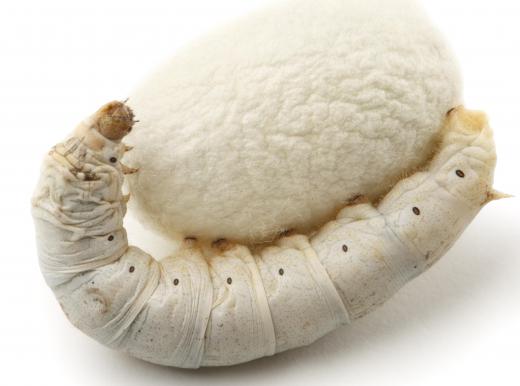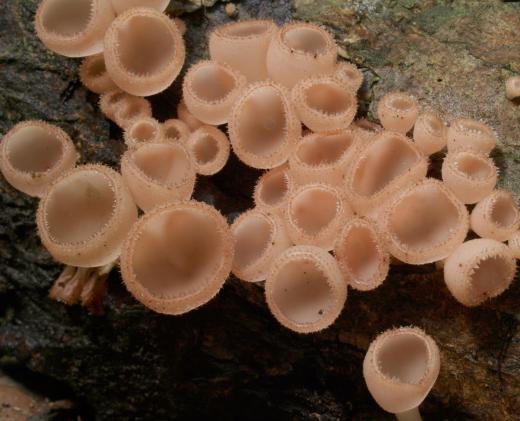What is Beauveria?
 Mary McMahon
Mary McMahon
Beauveria is a fungal genus within the ascomycete or “sac fungi.” This fungus is most well known among people involved in agriculture and the farming community, where it is used as a form of natural pest control. It is also sometimes found in homes and other structures, and it can cause health problems to certain individuals, although this is extremely rare.
These fungi reproduce asexually with spores, producing colonies which can mature in around a week under the right conditions. The mold has a slightly cottony texture, and it can be white, pink, or yellow, depending on the species. Because Beauveria fungi grow fairly rapidly, they can quickly colonize an area, sending hyphae into the substrate to give the fungus a firm foothold.

Beauveria species are typically found in soil and plant debris, and also in infected insects. The most famous species is probably B. bassiana, a species notable for causing disease and death in insects. The fungus is classically ingested, at which point the spores start to grow, eventually breaking through the internal structures of the insect and causing it to die. Silk worms and corn borers are especially vulnerable to this fungus, although a number of other insect pests are susceptible as well. Farmers can use topical applications of the fungi as a form of natural pest control.

In people with compromised immune systems, exposure to Beauveria spores can lead to infection with the fungus. In these instances, the ingested or handled spores start to grow, spreading hyphae through the body of the host and causing serious health problems to develop. Most people have immune systems strong enough to resist infection with Beauveria, but in people who lack this ability, the infection can become quite serious. Antifungal medications can be used in an attempt to control the infection and prevent it from spreading.

B. bassiana is also notable because it is an anamorph or asexual form of Cordyceps. In the sexual or teleomorph form, Cordyceps, the fungus produces a distinctive fruiting body which is used in Traditional Chinese Medicine. Anamorphs and teleomorphs are unique to the fungal world, and the science and classification behind them can get quite complex. The important thing to know is that many teleomorphs have multiple anamorph forms, and that scientists do not always agree on the classifications of the two forms, so sometimes conflicting information can be found about the sexual and asexual forms of various fungi.
AS FEATURED ON:
AS FEATURED ON:













Discuss this Article
Post your comments